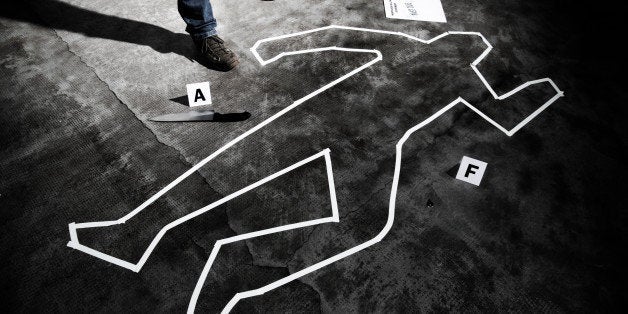
Forensic scientists looking for the exact time of death of a human corpse may have just gotten a new, powerful tool: the human body's own "microbial clock."
The human body is home to about 100 trillion microbes. This so-called "microbial clock" is essentially the succession of bacterial changes that the decaying body goes through postmortem.
“While establishing time of death is a crucial piece of information for investigators in cases that involve bodies, existing techniques are not always reliable,” said Jessica Metcalf, postdoctoral researcher at University of Colorado Boulder's BioFrontiers Institute and one of the authors of the study. “Our results provide a detailed understanding of the bacterial changes that occur as mouse corpses decompose, and we believe this method has the potential to be a complementary forensic tool for estimating time of death."
During the 48-day study, Metcalf and her colleagues tracked the microbial changes on the heads, torsos, body cavities and grave soil of 40 mice at eight different points of time and during the forensically recognized stages of decomposition, including "fresh" -- before decomposition begins. That's followed by "active decay," which includes bloating, rupture and advanced decay.
As the researchers note, forensic scientists often use the development rate of various insects that begin to inhabit a decomposing corpse to aid in a postmortem legal investigation. But this method, called forensic entomology, is not always successful or entirely accurate. Metcalf and her colleagues write:
Forensic entomology is widely used to assess the post-mortem interval (PMI), but errors can range from days to weeks. Microbes may provide a novel method for estimating PMI that avoids many of these limitations. Here we show that postmortem microbial community changes are dramatic, measurable, and repeatable in a mouse model system, allowing estimates of PMI to within ~3 days over 48 days. Our results provide a detailed understanding of bacterial and microbial eukaryotic ecology within a decomposing corpse system and suggest that microbial community data can be developed into a forensic tool for estimating PMI.
For their new technique, the researchers used a high-technology gene sequencing technique on both the bacteria and microbial eukaryotic organisms developing on the postmortem mouse. With that information, they were able to pinpoint the time of mouse death within roughly four days, following analysis after 48 days. The results were even more accurate following analysis at 34 days -- the researchers correctly estimated the time of death within about three days.
“At each time point that we sampled, we saw similar microbiome patterns on the individual mice and similar biochemical changes in the grave soil,” said Laura Parfrey, a former CU-Boulder postdoctoral fellow and now a faculty member at the University of British Columbia who is a microbial and eukaryotic expert in a statement about the new study published at eLIFE. “And although there were dramatic changes in the abundance and distribution of bacteria over the course of the study, we saw a surprising amount of consistency between individual mice microbes between the time points -- something we were hoping for.”
Read the entire study here.
It has been something of a breakthrough year for new forensic techniques to determine time of death. A study published in Proceedings of the National Academy of Sciences found that a healthy person's time of death could possibly be estimated within a few hours by analyzing the activity levels of certain genes -- whether they are switched "on" or "off" -- in various regions of the deceased brain.
And there is always room for more forensic tools as all of them have some degree of uncertainty. “But given our results and our experience with microbiomes," Metcalf said, "there is reason to believe we can get past some of this uncertainty and look toward this technique as a complementary method to better estimate time of death in humans.”

